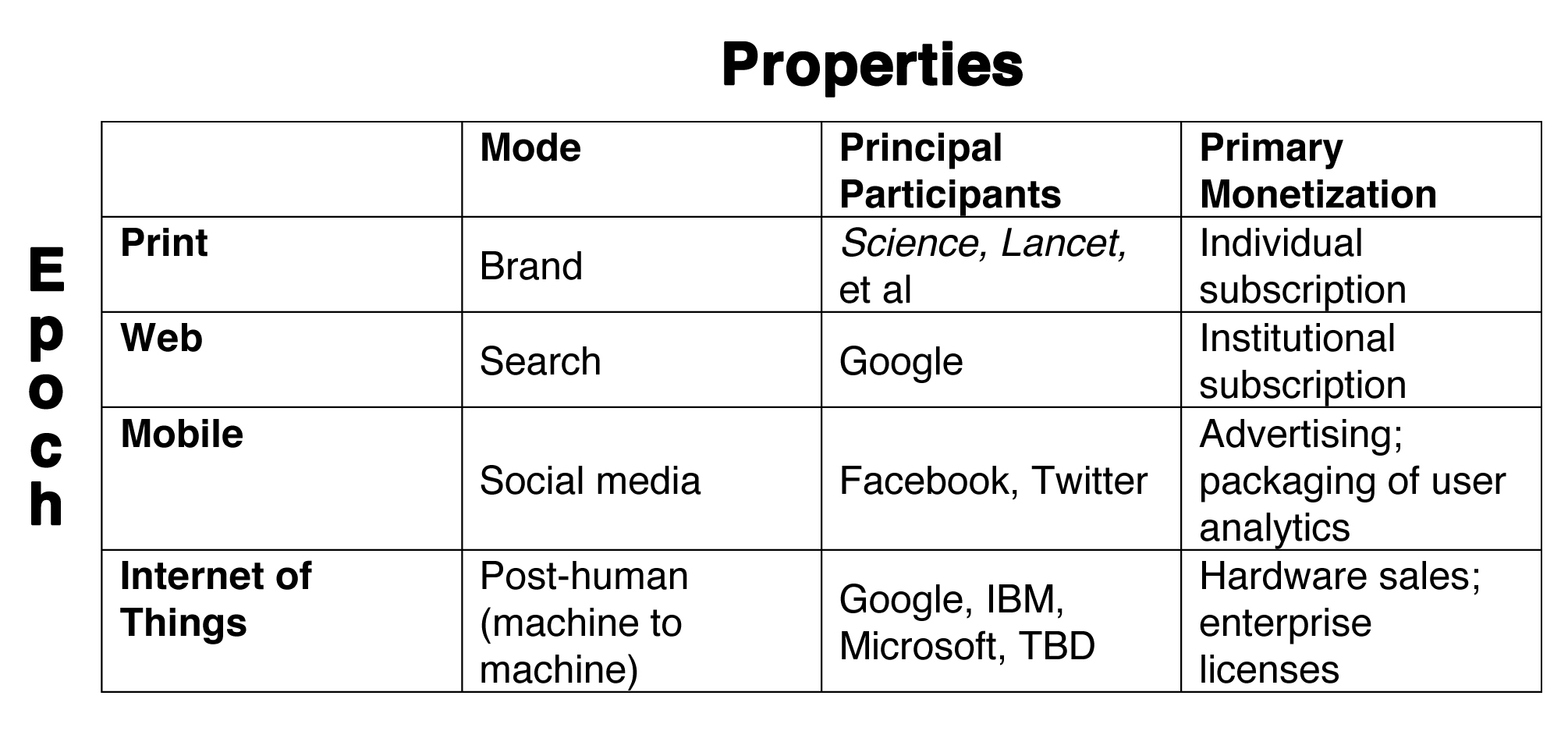
The proposition was that “the brand is everything.” It was put to me in such a forceful and peremptory way that I imagined it in uppercase: Brand Is Everything. Now, whenever I am in the presence of uppercase idealists and abstract ideas–Idealists and Ideas–I fly away. My out-of-body experience took me to Rome, with the opening lines of “Burnt Norton” echoing in my mind:
Time present and time past
Are both perhaps present in time future
And time future contained in time past.
Here we have the Colosseum, there the palaces of the Renaissance. A short walk to the intersection presents the spectacle of the modern world: autos racing nearly to collision; drivers jumping out for fierce argument; then they return to their cars and drive away. Oddly, there is no violence. All this takes place beneath the Mediterranean sun, as it did for Julius Caesar and Pope Julius II. Every epoch is present in the Eternal City.
To the proposition Brand Is Everything, I ask: At what time? In the world of scholarly communications, brand is a tool for discovery. How do I know what is worth reading? Well, did it appear in Science or The Journal of the American Chemical Society? As a tool for discovery, brand had its apogee during the print era, which I am tempted to capitalize as we do Jurassic and Cretaceous. Brand was not the only means of finding things when we worked primarily in print, but it was the most important way. A brand, as it were, was the search engine of its time. The print era gave us the apotheosis of the editor and the publications that supported the finest editorial programs, which were thus represented by their brands.
But time passes–and the empire of print goes into decline and fall. With the advent of Web publishing in the 1990s, the primary means of discovery moved from the brand, which provided us with the promise of outstanding selection, to the search engine, which challenged brands by searching instead on topics, represented by keywords. The question is no longer what can I find in the publications of my professional society but how do I find everything on a particular topic? The stewards of the great brands understandably despise this, but in a very short period of time, Google rose to become a leading, perhaps the leading tool for discovery. With that rise, talk began about the death of brands and the obsolescence of the publishers that supported them. That whispering continues today, as do many of the brands that Google was supposed to obliterate.
It does seem that publishing epochs today have much shorter half-lives than in the past. In 2007, with the advent of the iPhone and the Kindle, the era of the Web gave way to the world of mobile computing. When we get caught up in the tiresome debate of print vs. digital, we lose sight of the fact that the digital world is already moving to a new paradigm; and in that new world the means of discovery change, too, from the ubiquitous Google search to referrals via social media. Google’s centrality is yielding ground to Facebook, Twitter, Mendeley, and various other social media services. If the brand is everything, tell it to your colleague who is suggesting you look at an article whose provenance is unknown. You trust that colleague and take a look. In effect, that trust has made your colleague into a brand, which serves as brands always have, as a tool for discovery.
We are now on the cusp of a new epoch, the fourth, even as we have not fully emerged from the first. I include it here mostly for the sake of completeness as its implications for scholarly communications are as of now unknown. This is the post-human Internet, better known as the Internet of Things (interestingly, usually spelled uppercase or abbreviated as IOT). The IOT is the emerging world of machine-to-machine communications. Whereas in the mobile paradigm, we carry devices with us, in the IOT we serve as hosts for various sensors and machine communications. It will be hard for publishers to come to grips with IOT even as they are struggling to make sense of the Web. You don’t want to be a Stone Age publisher in the Iron Age, an Iron Age publisher in the Machine Age. And if you are on the business side of publishing, you will want something more than the ethereal promises of the New Age.
Each of these epochs gather around themselves a set of properties and conspicuous organizations, which I have attempted to summarize in the table:
 Immediately objections arise; and if you don’t believe this, just wait for the comments on this blog. The point here, though, is not that the epochs are distinct but that they are all layered on top of each other. The problem is not that big brands are getting smaller; the situation is that other things are getting big. The problem is not that superior editorial selection is being devalued; the situation is that other forms of selection are gaining in value. The problem is not that institutional subscriptions are mature; the situation is that new, often experimental business practices are chucking off their short pants and standing before us with quiet confidence.
Immediately objections arise; and if you don’t believe this, just wait for the comments on this blog. The point here, though, is not that the epochs are distinct but that they are all layered on top of each other. The problem is not that big brands are getting smaller; the situation is that other things are getting big. The problem is not that superior editorial selection is being devalued; the situation is that other forms of selection are gaining in value. The problem is not that institutional subscriptions are mature; the situation is that new, often experimental business practices are chucking off their short pants and standing before us with quiet confidence.
At the heart of the management of a publishing enterprise is an awareness of the environment that surrounds the organization. It is natural for someone who works with a prominent brand to shout about the virtues of the brand (which may be considerable), but management is the art of seeing around corners–and determining how to dominate the epoch that lies just ahead. Better a good brand than no brand; better a service that is integrated into every possible means of discovery than one that stands apart and aloof; better to be part of a broad conversation, even among people without expertise in a field, than to demand to see the credentials of all ye who enter here; better to explore the emergent world of data analytics than to focus narrowly on the primary content. New things bubble up from the surface. If we insist on Talking in Capital Letters, we may end up among the ruins.
Discussion
7 Thoughts on "An Archaeology of Discovery"
Amen…but I fear another sermon lost on most publishers…
I would say — echoing Martin Eve — that brands are “proxy measures for quality.” When a colleague recommends an article that has of otherwise uncertain provenance, that colleague serves as a different proxy measure for quality, not as a brand. The point being, there are many proxies for quality, and brand is just one. In fact, every scholar I know values other more (chiefly peer review — which is closer to what the colleague in your example resembles than a brand). All proxies for quality can save time and direct attention, but that doesn’t mean all proxies for quality create trust.
I agree that brands are on the wane, but I disagree with your essentializing point about discoverability. It is a function of what Michael Bhaskar calls amplification (like brand and like marketing). Conflating different discrete publishing functions is not very helpful, I think. This is why Bhaskar’s theoretical approach to the essentials of publishing function is so good to have to hand.
I did not say that brands are on the wane. I said the opposite.
Sorry. OK, to be more precise, I inferred that you view publisher brands waning as discovery mechanisms. You view other brands increasing in power as discovery mechanisms. If my first inference was correct, then I agree with it. I disagree with a different thing tangled in there, which is an indication that brand and trust are married. In fact, I think scholarly trust is still primarily attached to, derived from, associated with “filtering” of content not amplification of content. Brand, therefore, is a necessary but not sufficient piece of shifts in the technological epochs you describe. Filtering, as your example of the trusted colleague recommendation indicates, can be detached from brand, and to a large degree it always has been (e.g., very prestigious book series emerge from otherwise unspectacular presses because the quality of the books is notable).
new, often experimental business practices are chucking off their short pants and standing before us with quiet confidence.
Without their pants? I can only aspire to such confidence.
Brand may not serve the same function as it once did for discoverability, but it remains very important, as anyone knows from the rankings of publishers and the rankings of journals that various disciplines undertake to survey from time to time. In the field of law, where students edit journals and there is generally no peer review, the relevant brand is the university where the law journal is based, as I was reminded at a conference at UNT yesterday on law and open access.



